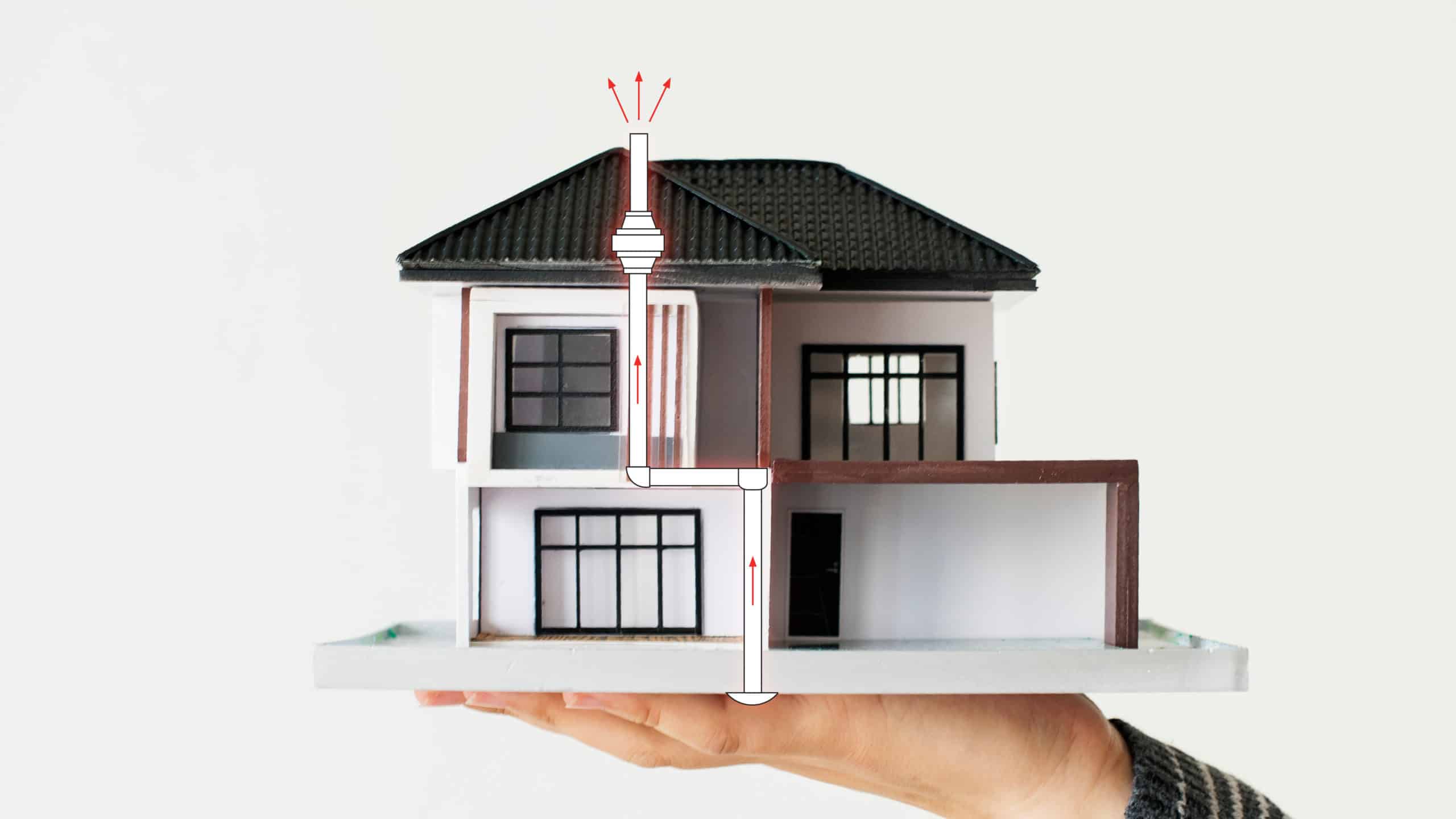
Although radon is naturally occuring, found in the solid beneath buildings and structures, this radioactive gas can be dangerous to our health in high concentrations. It can seep into homes through cracks in the foundation, accumulating to hazardous levels, where long-term exposure to high levels of radon gas is proven as the leading cause of lung cancer among non-smokers.
In order to lessen the presence of radon in one’s home, a radon mitigation system can be installed.
What Is a Radon Mitigation System?
Radon mitigation systems are used to mitigate — or reduce — radon levels in structures. There are several different types of radon mitigation systems, but they all work by creating a barrier between the soil and the living space, and then safely venting the radon gas to the outside.
This is primarily achieved through the use of a fan that continuously draws air from the soil (which can contain radon), normally filtered out through a pipe that runs either inside or outside of a home and up to the edge of the roof. This filtration pipe is placed away from windows, and sealing of any cracks or openings in the foundation prevents radon from re-entering or contaminating the structure.
Some of the more commonly utilized radon mitigation systems include:
- Sub-slab suction/depressurization: A PVC pipe directly under the concrete slab foundation of a house, in tandem with a fan, draws out radon gas and vents it to the outside.
- Drain tile suction: This mitigation system uses a pipe to penetrate through the drain tile system of a house and vents soil radon gasses outside.
- Submembrane suction: A plastic sheet is placed on top of the soil underneath a structure. This sheet is penetrated by a radon pipe, which pulls out the gas and vents it outside with the help of a fan.
Those aren’t your only options, however. Professionals may also make use of other radon mitigation systems, including sump pit or block wall suction, which, respectively, involve installing radon pipes in a house’s sump pit or venting gas through a home’s block walls. Positive pressure systems avoid using the pipe/fan method, instead working to pressurize a house with filtered air to prevent radon gas from entering the home.
How Is a Radon Mitigation System Installed and Maintained?
The first step in installing a radon mitigation system is for an inspector to conduct a radon test to determine the level of radon present in the building or structure. This can be done by using a passive radon detector, such as a charcoal canister, or an active radon detector, such as a continuous radon monitor. Once the radon level has been determined, the type and size of the radon mitigation system can be determined.
Since houses and radon levels vary in size and concentration, only a professional radon mitigation and testing crew can properly determine what the needs of your property are.
The installation of a radon mitigation system typically involves excavating around the perimeter of the building and installing whatever piping or hardware is needed according to the mitigation plan recommended by a professional. Once the system is installed, it is tested to ensure it is functioning properly.
In order to maintain the ongoing effectiveness of the radon mitigation system, it is important to regularly check the radon levels in the structure and to ensure that the fan is functioning properly. The fan should be cleaned and the filters should be replaced as needed. Additionally, it is important to make sure that the vent pipe is not blocked and that the system is not leaking.
Mitigate Wisely With Radon Crew
If you’re concerned about radon levels in your home, it can be comforting to know that so many different types of mitigation solutions are available, yet overwhelming to know which one is right for you, your family and your property’s infrastructure. That’s what Radon Crew is here for; even if you can’t see it, radon could be present in your home. It’s important to test for radon to ensure your family is safe from the long-term threats that radon poses, and if necessary, put the right mitigation measures into motion.
Radon Crew can help — contact us today to get a test done.
